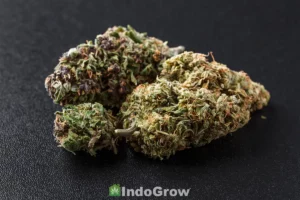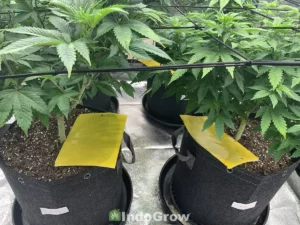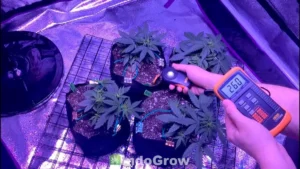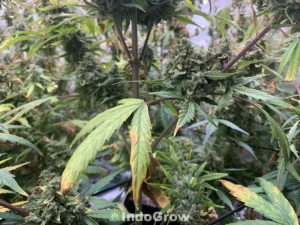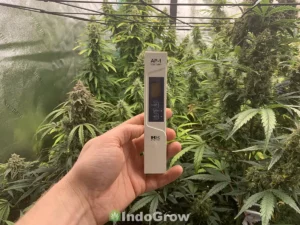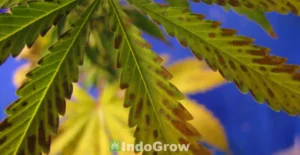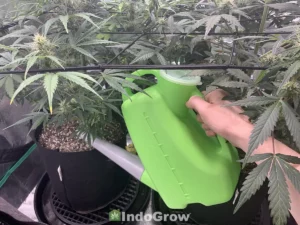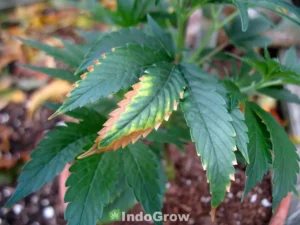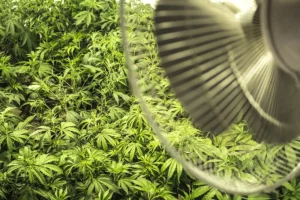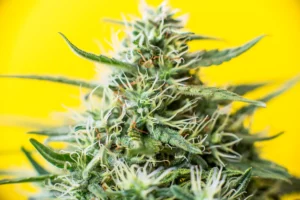Cannabis plants are susceptible to various bugs, pests, and insects. These creatures can cause severe damage to your plants and, in some cases, even kill them. It is essential to be aware of the different types of cannabis bugs and how to identify them so that you can take steps to protect your plants.
This article will look at some of the most common cannabis bugs and pests and how to keep them away from your plants. Keep reading to learn everything you need to know about cannabis bugs, pests, and insects!
Indoor vs Outdoor Cannabis Pests
Cannabis pests can be a problem whether you grow your plants indoors or outdoors; however, pests are much more common with outdoor grows or when your grow room is set up in the garage or shed.
Indoor cannabis pests are typically much smaller and harder to identify than outdoor pests. These tiny pests tend to hide in dark, secluded areas, which makes them even more difficult to spot. Common indoor cannabis pests include aphids, whiteflies, spider mites, and mealybugs.
Other indoor cannabis pests include common household pests such as ants, roaches, and spiders. These pests are attracted to the warm, moist environment inside grow houses and can quickly become a problem.
Indoor cannabis growers must be extra vigilant about pests. Once they are in, they can quickly multiply and become a severe problem.
How to Prevent Cannabis Bugs?
Cannabis bugs can infest your plants and wreak havoc on your crop. These pests are difficult to control and can quickly destroy a plant. However, you can implement an integrated pest management system to keep them from taking over your garden.
Cannabis bugs are most commonly found in humid and warm climates. To prevent them, it is crucial to keep the temperature and humidity of your grow room within ideal ranges. You can also use a dehumidifier in your grow room to help adjust the humidity level.
Also keep grow room closed to the outside. By doing so, you are preventing bugs from entering the grow room and infesting your plants.
You must also avoid garages, sheds, and basements when possible. These areas are often damp and humid, creating an ideal environment for mould and mildew to grow. They are also dark, which can attract insects. Finally, these areas often contain chemicals and other materials that can harm your plants.
If pest problems are common for you, proactively apply a safe pesticide at the beginning of the vegetative stage (2-3 weeks old). Do not apply earlier because it can damage seedlings.
How to Get Rid of Cannabis Bugs?
Pesticides are the most common and effective way to eliminate cannabis bugs. You can find pesticides at most hardware stores or online. There are many different pesticides, so be sure to choose the right one for your needs.
Use safe, proven pesticides at the first sign of infestation because waiting too long gives the bugs time to spread further and cause more damage. Ideally, use natural and/or organic pesticides when possible. Spray on top and underneath of all leaves. It’s especially important to get the underside since that’s where many pests congregate.
Another common weapon against cannabis pests are sticky bug strips. Many growers keep sticky strips inside the tent as a preventive. The use of oscillating fans can also help combat bugs by reducing heat and moisture inside the grow tent.
Neem oil is a 100% natural pesticide that’s extremely effective against common cannabis bugs like spider mites, aphids and white flies. It can be applied as a preventative or at the first signs of infestation.
Common Cannabis Pests
We’ve identified some of the most common bugs and other pests below. The key is to identify these pests early and take action. Otherwise, they can seriously hurt your harvest.
Aphids
Aphids are one of the most common pests in indoor cannabis grows. They are small, wingless insects that feed on the sap of plants and are frequently present on the underside of the leaves and vary in size depending on their age and maturity. Common causes of infestation include overcrowding of plants, lack of ventilation, and poor drainage.
Growers can effectively treat aphids with insecticidal soaps, azadirachtin, and neem or horticultural oils. Aphids can also be controlled by physical means such as pruning infested plants and Introducing plant-friendly insects such as lacewing larvae, parasitic wasps, and ladybird beetles to feast on aphids. Growers can control root aphid populations using azadirachtin and pyrethrin drenches.
Barnacles/Scale Insects
Barnacles are scale insects that feed on the plant’s juice and nutrients. They occur in various shapes and sizes and, at first, may appear as a plant growth rather than a bug infestation.
These bugs thrive in warm climates and on stressed plants. They originate in the environment and are typically transmitted to plants by infected plants. They can also spread through pets, soil, and clothing.
As a result, indoor growers should check their clothing for bugs before entering their grow room. It is also advised not to allow animals into grow areas because this prevents them from using different ways of migration.
Again, a soap spray can assist in eradicating them. A strong water spray, neem oil, or predator insects like lacewings and ladybirds can help.
Broad Mites
Broad mites belong to the Tarsonemidae family. They move swiftly, are very small, and are difficult to spot.
Broad mites are common in indoor cannabis grows, but their presence does not necessarily mean an outbreak is underway. They can be introduced into a grow room through contaminated equipment, clothing or soil, or they may simply be living in the environment near the plants.
Insecticidal soaps and horticultural oils can be effective in eliminating broad mites, but they must be applied directly to the mites. Other remedies include fumigation with a pesticide or destroying infested plants. You may also introduce cannabis-friendly predators to prey on them.
Spider Mites
Spider mites are tiny arachnids that can infest cannabis plants and cause extensive damage. They are prevalent in indoor grows, where they can quickly spread from plant to plant.
Common causes of spider mite infestations include:
• Bringing plants indoors from infested outdoor grows.
• Using infested soil or grow media.
• Introducing infested clones or adult plants into a grow.
Spider mites flourish in dry environments and reproduce rapidly in hot environments.
When damaged leaves are discovered, they should be treated by spraying a mixture of alcohol and water on the affected areas. Insecticidal soaps, neem, horticultural oil, and ecotenona are some items that may be beneficial. Spider mites are known to dislike rosemary and other plant oils.
Increasing relative humidity and decreasing temperatures near plants, high-pressure water sprays can dislodge mites and damage their protective webbing. Biological control with predatory mites or other beneficial insects can help with minor infestations or prevent them altogether. Also, consider removing infested plants and debris and treating the soil with a fungicide or insecticidal concentrate.
Russet Mites
A russet mite is a tiny bug that frequently attacks marijuana plants. These insects cannot be seen with the naked eye and are not usually noticed until your plants have been severely damaged. Russet mites on cannabis start by eating the leaves near the plant’s base and continue until they eat the plant to the tip-top.
Because of their small size, russet mites frequently move by attaching themselves to clothing, various pest insects such as aphids and whiteflies, and discarded detritus. The infestation will increase faster when the windless, dry, and warm climate.
The most efficient methods for treating russet mite infestations are micronized sulfur and Trifecta Crop Control. Dilute sulfur with water and spray on the plants.
Predatory mites such as Anderson or Amblysieus mites are another natural choice. Amblyseius swirskii, Amblyseius andersoni, and Amblyseius californicus are the most widely used predators. Commercial cannabis growers have approved the effectiveness of these predators.
Mealybugs
Mealybugs are small, soft-bodied insects covered in white, mealy wax. Mealybugs feed on plant sap and can cause leaves to turn yellow and wilt.
Common causes of infestation include stressed or unhealthy plants and poor ventilation. Mealybugs are most commonly found on the stems and leaves of plants but can also be found on the roots.
Whether your mealybug infestation is light or severe, you can begin by hand removing as many of these white fluffy bugs as possible. Fill a bucket with soapy water and separate the mealybugs with a damp towel before throwing them into the water to destroy them.
Neem oil is a potent natural therapy for many parasites and fungi, including mealybugs. For optimal results, combine it with potassium soap.
Isopropyl alcohol applied directly to the exterior shells of mealybugs is also an excellent technique to kill them. Alcohol dries off the protective coating of the white fuzzy bugs, eventually weakening and killing them.
Caterpillars and Inchworms
Caterpillars and inchworms can infest indoor cannabis grow, but they are more common with outdoor grows. Both caterpillars and inchworms are the larvae of moths, and they can feed on cannabis leaves.
Caterpillars and inchworms mostly find their way into an indoor grow room through the ventilation system. If the grow room has cracks or holes in the ventilation system, the caterpillars and inchworms can quickly gain access. Once inside, they will start to eat away at the plants, leaving them vulnerable to other pests and diseases.
Caterpillars on cannabis plants, fortunately, are easily identified and removed by hand. Alternative treatments include spraying the plantation with pepper and garlic insecticides and introducing Trichogramma wasps or spined soldier bugs.
Azadirachtin, neem oil, and other insecticidal oils may also be beneficial. Insect barrier materials can also be employed if a severe epidemic is expected.
Fungus Gnats
Fungus gnats resemble tiny flies that buzz around cannabis plants, mainly in the soil. Their larva thrives in damp soil, frequently occurring when the topsoil remains wet for an extended period between waterings.
Fungus gnats frequently go away on their own if you allow the top inch of your soil to dry out before watering your plants each time. However, suppose you have a severe infestation. In that case, it may take weeks of appropriate watering habits to eliminate all of them unless you additionally do something to directly kill the bugs and reduce their population.
SM90, neem oil, and Food-Grade Diatomaceous Earth are ideal for any grower looking for an organic solution. Essentria IC3 Insecticide also removes fungus gnat larvae in your crop.
Leafhoppers
Leafhoppers are tiny insects the size of a grain of sand that hop from plant to plant, one leaf to the next, damaging crops. They lay their eggs on your plant’s leaves while sucking the sap. They are small, fast-moving, and agile, making them difficult to control.
They are most common in outdoor grows but can also be found indoors. Leafhoppers are most commonly found in the spring and summer months.
There are insecticidal pesticides available, but few growers want to spray their buds that will be vaping later with insecticides. Many people prefer neem oil and favour helpful predators such as the cannabis grower’s pals, the Ladybird, Lacewing, and Parasitic Wasps.
Planthoppers
Planthoppers are tiny, sap-sucking insects that can infest indoor and outdoor cannabis grows. They are most common in humid climates and are often attracted to cannabis plants that are already stressed or weakened.
Popular solutions to planthopper infestations include using insecticidal soap or neem oil or introducing beneficial insects such as lady beetles, parasitic wasps, ladybugs, and lacewings to eat the plant hoppers. Pyrethrin also works well because pyrethrin-based pesticides are not highly hazardous to humans; they are frequently recommended for vegetable gardens.
Leaf Miners
Leaf miners are tiny insects that tunnel through leaves, causing them to appear blotchy or discoloured. Leaf miners can be a problem for indoor cannabis growers because the insects are attracted to the heat and humidity of grow rooms. The warm, humid environment is ideal for their reproduction.
A wise farmer will use adhesive strips around the crops. However, insecticides such as azadirachtin, neem, or horticultural oils can be applied to the plant to control the larvae. Leaf miners can also be eaten by parasitoid wasps and generalist predators such as lacewing larvae.
Crickets
They are small, brown, and often hide in the dark, damp places. Crickets can damage plants by eating their leaves, and they can also spread diseases.
Crickets are attracted to the warm, moist environment of cannabis grow and can quickly infest indoor cannabis grow. Common causes of cricket infestation in indoor cannabis grows include inadequate lighting, water damage, and poor ventilation.
When dealing with crickets, neem oil, insecticidal soaps, and Bacillus thuringiensis-based products are recommended. Cricket bait or traps can also be used to attract and collect crickets. They can be highly effective at times. Although this will not eliminate an infestation, it will significantly reduce the number of crickets, making your other approaches more effective.
Grasshoppers
Grasshoppers are a type of insect closely related to crickets and locusts. These insects are frequent cannabis pests that reside on the branches and feast heavily on the leaves, stems, and flowers. Grasshoppers can be difficult to eradicate since they are highly migratory, and their populations fluctuate throughout the year.
They may come in through open doors or windows or be carried in on clothing or other objects. Once they are inside, they will start to look for food. Cannabis plants are an ideal food source for grasshoppers, so they will likely go after these first.
Bacillus thuringiensis (Bt) is a bacterium that eliminates chewing insects such as caterpillars and grasshoppers. To control larval populations, apply Bt to the soil or base of newly planted cannabis early in the season. Treatments with neem oil, insecticidal soaps, and Bacillus thuringiensis-based solutions are also recommended.
Slugs/Snails
They are often found in damp, humid environments and feed on the plant’s leaves and flowers. Slugs and snails can enter grow rooms through open doors and windows, cracks or dirty equipment and clothing. They prefer moist environments, so poor ventilation or high humidity levels can lead to growing populations.
The best cannabis pest management method for slugs and snails is physically removing them at night when they are most active. Alternative treatments include deploying baits and lures (for example, a jam-and-beer mixture), and introducing the predatory slug Ruminia decollate.
Thrips
Thrips are tiny, winged insects that are attracted to the flowers of cannabis plants. They are a common problem in indoor grows, as they can quickly fly in through open doors or windows. Thrips feed on the leaves of cannabis plants, causing them to turn brown and curl up.
Unless the flowering process has already begun, spraying with potassium soap or neem oil could be beneficial. If this is the case, alternate cannabis pest control tactics, such as wasps or sneaky flower bugs, must be considered. Using predatory nematodes and soil mites to control numbers is exceptionally effective.
Thrip populations are easily resistant to pesticides, thus using different chemistries at the labelled application rates to avoid this possibility.
Whiteflies/White Flys
Whiteflies are small, winged insects closely related to aphids and mealybugs. They are common in warm, humid climates and can infest indoor and outdoor plants. Whiteflies are attracted to the smell of cannabis and can quickly build up to high numbers on plants.
The most common cause of infestation is the introduction of infected plants into a grow room. Whiteflies can also be introduced by other pests, such as aphids, which can carry the eggs into the grow room on their bodies.
They must be treated consistently using various strategies such as growing repellant crops (such as basil), strategically inserting yellow sticky strips, or spraying with neem oil or potassium soap. Whitefly populations can be reduced by parasitoid wasps, lacewing larvae, pirate bugs, and other insects. Reflective mulches and weed control can deter whiteflies.
Summary
Cannabis plants are susceptible to infestations from a variety of pests and insects. The bugs range from common household pests like aphids and spider mites to more specialized cannabis pests like thrips and whiteflies.
Cannabis bugs can cause extensive damage to plants and can even result in crop loss if left unchecked. They can also transmit diseases to the plant. To prevent infestations, it is essential to regularly inspect plants for signs of pests or insects.
If an infestation is found, it is vital to take appropriate action to rid the plant of the pests. There are various pest control products available that can help to prevent or reduce the damage they cause.
Insecticidal soap or oil can kill bugs on contact, while repellents can help deter other pests from attacking the plants. Proper irrigation and fertilization can help maintain healthy plants and minimize pest damage.
If you enjoyed this article, you may be interested in Integrated Pest Management Strategies for Cannabis.

Rocky Horton
Author
Rocky Horton is an experienced cannabis grower and the founder of IndoGrow. The IndoGrow editorial team has over four decades of combined growing experience. Learn more.


